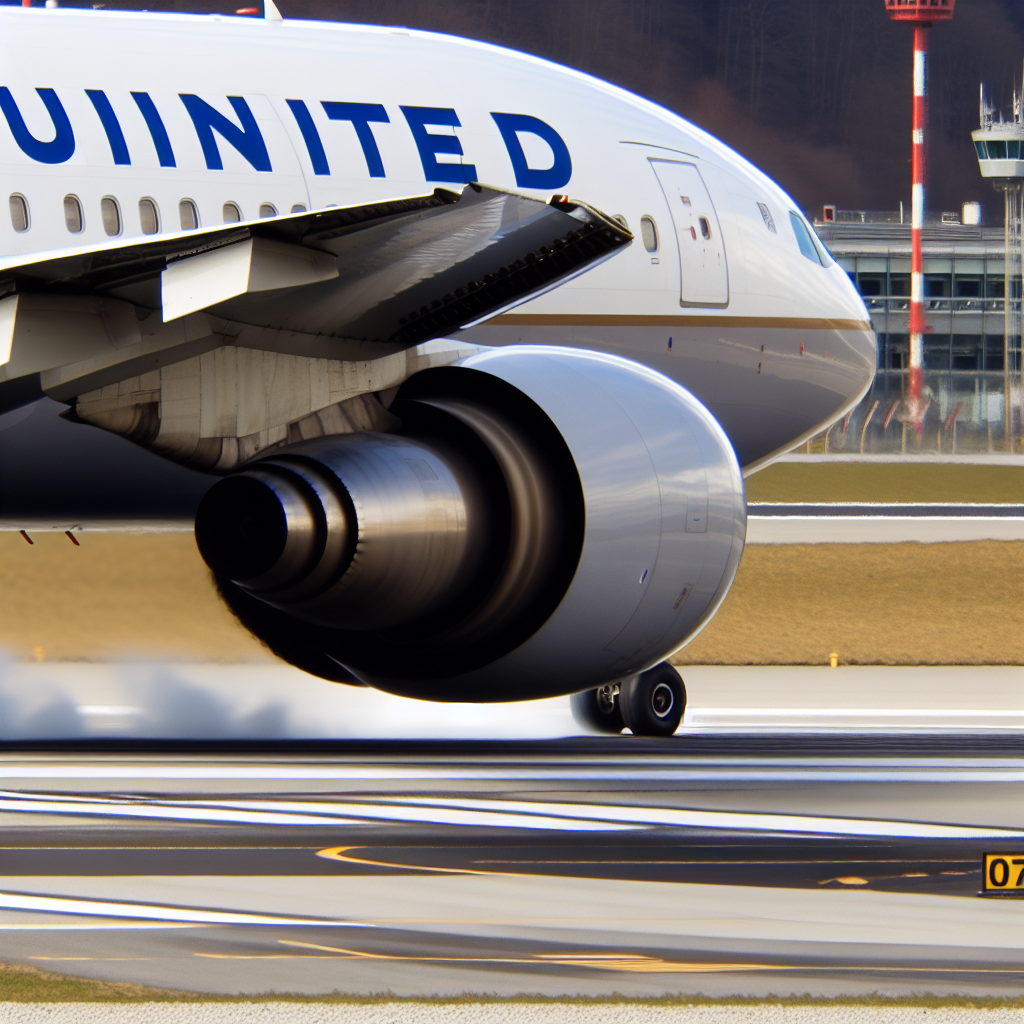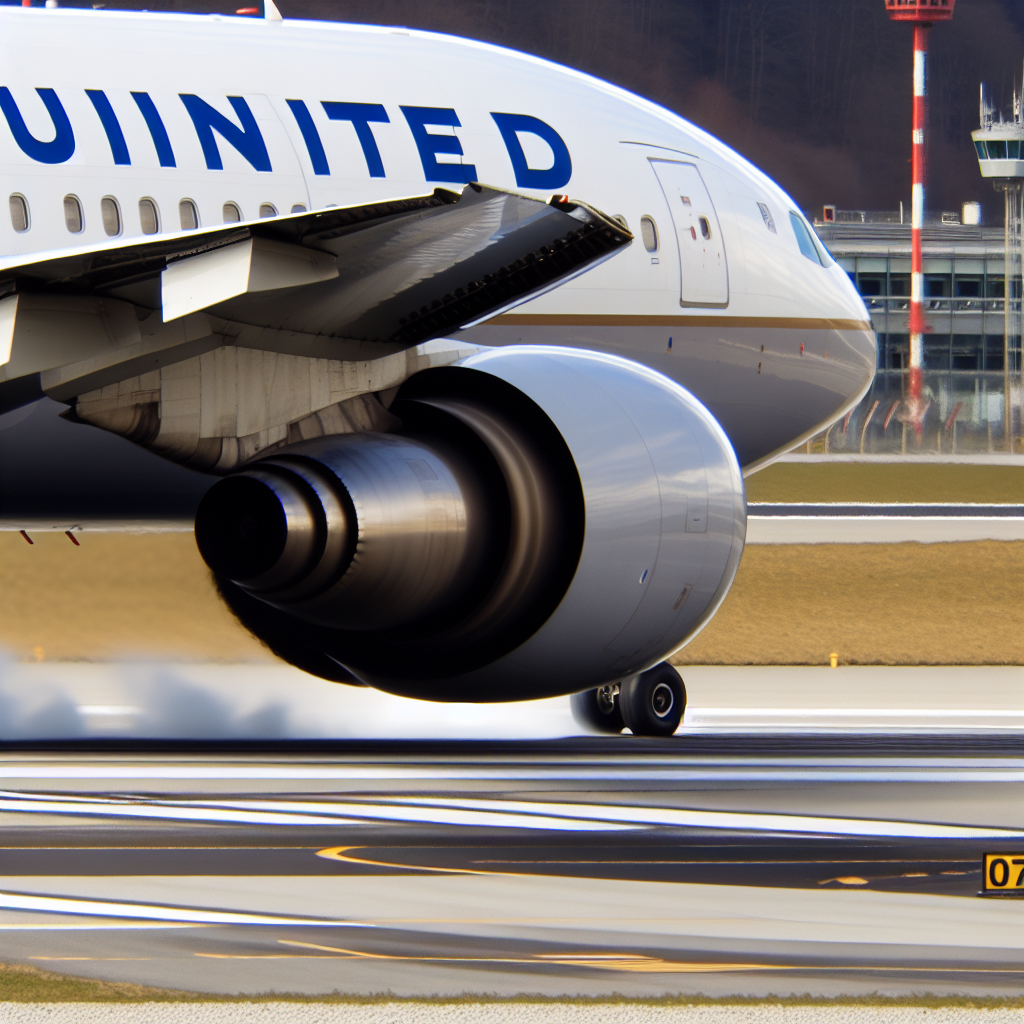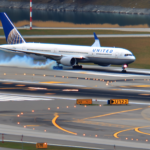ZURICH- A United Airlines (UA) Boeing 767-300 operating Flight UA12 from Zurich Airport (ZRH) to Chicago O’Hare (ORD) was compelled to abort takeoff at high speed on June 24, 2025.
The aircraft, with 142 passengers and crew members onboard, halted on Runway 16 after the flight crew executed a rejected takeoff at around 145 knots. Emergency responders quickly evacuated passengers safely, and the aircraft was cleared from the runway nearly four hours later.
United Airlines Flight UA12, operated by a Boeing 767-300 (registration N684UA), was scheduled to leave Zurich Airport (ZRH) at 09:50 local time for Chicago O’Hare International Airport (ORD).
During its takeoff roll on Runway 16, the flight crew carried out a high-speed rejected takeoff at approximately 145 knots—significantly exceeding the standard V1 threshold for such aircraft.
The aircraft came to a complete stop just past the intersection with Runway 28. Due to hard braking, several main landing gear tires burst. Passengers were evacuated using mobile stairs directly on the runway, and fortunately, no injuries occurred.
Initial communications between the flight crew and Zurich tower suggested that the pilots thought they could vacate the runway and proceed with their post-abort checklists. However, the tower directed them to hold their position due to the emergency response that was already activated.
While United Airlines has not provided detailed technical information, the airline confirmed to Swiss news outlet 20 Minuten that a “technical issue” led to the rejected takeoff. A spokesperson stated the airline was working to rebook affected passengers on alternative flights to minimize additional delays.
The aircraft remained on the runway for almost four hours before being towed to a remote location. Although Zurich Airport operations were briefly disrupted, air traffic was able to resume on alternate runways during the incident response.
Unusual Abort Above V1 Speed
Aborted takeoffs are considered standard safety protocols; however, they are usually executed below V1 speed—a critical decision point beyond which takeoff should generally continue. For the Boeing 767-300, V1 speed typically falls below 140 knots, varying based on weight and prevailing weather conditions.
According to Flightradar24 data, UA12’s abort took place at around 143–145 knots, categorizing it among the rare 2% of rejected takeoffs executed at or above 120 knots. High-speed aborts are performed only under exceptional circumstances, usually involving critical flight system malfunctions.
A formal investigation by Swiss aviation authorities and airline engineers is anticipated to follow.
Similar Incidents
An Emirates Airlines (EK) flight scheduled to depart from Chennai International Airport (MAA) to Dubai International Airport (DXB) aborted takeoff on June 8, 2025, due to a technical fault detected during taxiing.
Additionally, a United Airlines (UA) flight from Wilmington International Airport (ILM) to Newark Liberty International Airport (EWR) was forced to halt its takeoff roll on May 24, 2025, after experiencing a complete engine shutdown just before takeoff.
The Emirates (EK) Boeing 777 was preparing for its departure at Terminal D1 in Chennai (MAA) when, at approximately 9:50 AM IST, the pilots identified a system anomaly while taxiing. The flight crew promptly contacted air traffic control to request the takeoff be aborted for safety reasons.
Emergency response teams quickly arrived at Chennai Airport (MAA). The aircraft was safely returned to its gate, where Emirates’ technical crew conducted diagnostics. Despite initial troubleshooting efforts, the fault persisted, leading to the flight’s cancellation, affecting all 312 passengers onboard.
In a separate incident two weeks prior, United Airlines (UA) faced a similar situation at Wilmington International Airport (ILM). The aircraft, already delayed by over five hours, initiated its takeoff roll when the pilots abruptly stopped the plane. Passengers were later informed of an engine failure, prompting a return to the gate and the rescheduling of the flight to the following morning.
Safety Protocols and Emergency Response
Both incidents are designated as rejected takeoffs (RTOs), a critical phase where flight crews must make decisive actions before reaching V1—the speed at which takeoff becomes irrevocable. Aviation safety regulations stipulate that pilots must abort a takeoff if any serious fault is detected before this threshold.
In the United Airlines (UA) incident, the captain indicated a generator failure related to essential hydraulic systems. While rare, such failures may occur due to various factors including:
- Compressor stalls
- Bird strikes
- Fuel system leaks
- Foreign object debris (FOD)
- Component detachment
- Fire or overheating in engine compartments
Aircraft involved in both incidents—widebody long-haul jets—are specifically designed to endure engine failures and are equipped with multiple system redundancies, ensuring passenger and crew safety in stressful situations.
Stay connected with us for the latest updates. Follow us on social media for further announcements.
Join us on Telegram Group for the latest aviation news. Also, follow us on Google News.

Based on an article from aviationa2z.com: https://aviationa2z.com/index.php/2025/06/25/united-pilots-aborts-takeoff-at-zurich-airport/?utm_source=rss&utm_medium=rss&utm_campaign=united-pilots-aborts-takeoff-at-zurich-airport



